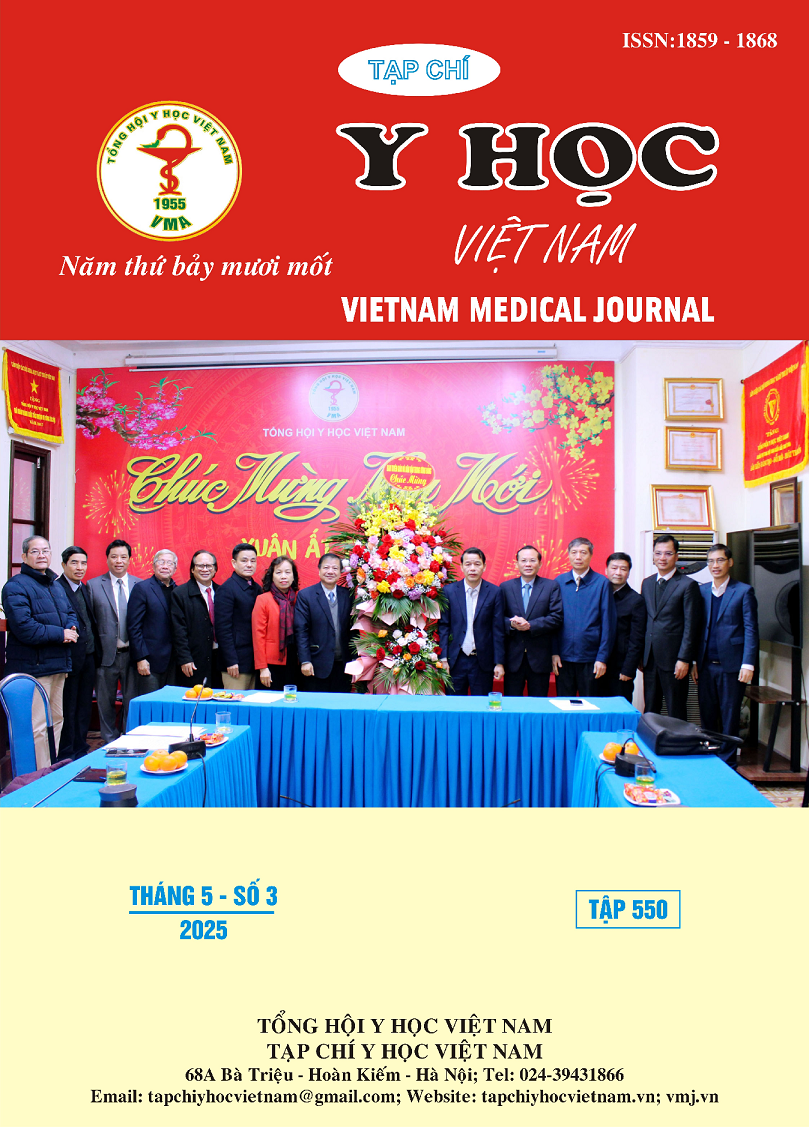RELATIONSHIP BETWEEN THE ONSET TIME AND ANESTHETIC INTERVENTIONS WITH GOOD NEUROLOGICAL OUTCOMES IN PATIENTS WITH SUBARACHNOID HEMORRHAGE DUE TO RUPTURED ANEURYSMS CERABRAL VESSEL
Main Article Content
Abstract
Purpose: Identify the relationship between good neurological outcome and time of disease onset and aneurysm intervention in patients with subarachnoid hemorrhage due to ruptured cerebral aneurysm. Design: Retrospective study. Methods: Study on 200 medical records of subarachnoid hemorrhage due to ruptured aneurysms cerebral vessel patients admitted to the Stroke Center and the Department of Neurosurgery from August 2023 to August 2024. Main findings: Of these patients (mean age 59; 54,5% women). At admission, the anterior cerebral circulation was the most common location of aneurysm, accounting for 81.5%, with headache as the most manifest initial symptom, at 88.5%. Regarding the severity of the disease, 59% of patients were grade I of WFNS. 79% of them achieved good neurological function in 1 month after discharge. Multivariate logistic regression analysis showed that factors associated with good neurological function included grade I WFNS (OR = 4.9, 95% CI: 1.1–22.4; p=0.039) and anterior cerebral circulation aneurysm (OR = 4.6, 95% CI: 1.5–14.0; p=0.007). Patients treated for aneurysms within 24 hours of symptoms onset were more likely to achieve good neurological function in 1 month after discharge. Conclusion and recommendations: Patients with subarachnoid hemorrhage due to ruptured cerebral aneurysms who undergo aneurysm repair within 24 hours of symptom onset have better neurological function after discharge.
Article Details
Keywords
Subarachnoid hemorrhage, ruptured aneurysms cerebral vessel, aneurysm intervention, good neurological outcome
References
2. Rosenørn, J., Eskesen, V., Schmidt, K., & Rønde, F. (1987). The risk of rebleeding from ruptured intracranial aneurysms. Journal of neurosurgery, 67(3), 329–332. https://doi.org/10.3171/jns.1987.67.3.0329
3. Cha, K. C., Kim, J. H., Kang, H. I., Moon, B. G., Lee, S. J., & Kim, J. S. (2010). Aneurysmal rebleeding: factors associated with clinical outcome in the rebleeding patients. Journal of Korean Neurosurgical Society, 47(2), 119–123. https://doi.org/10.3340/jkns.2010.47.2.119
4. Hoh, B. L., Ko, N. U., Amin-Hanjani, S., Chou, S. H.-Y., Cruz-Flores, S., Dangayach, N. S., Derdeyn, C. P., Du, R., Hänggi, D., Hetts, S. W., Ifejika, N. L., Johnson, R., Keigher, K. M., Leslie-Mazwi, T. M., Lucke-Wold, B., Rabinstein, A. A., Robicsek, S. A., Stapleton, C. J., Suarez, J. I., Tjoumakaris, S. I.,… Welch, B. G. (2023). 2023 Guideline for the Management of Patients With Aneurysmal Subarachnoid Hemorrhage: A Guideline From the American Heart Association/American Stroke Association. Stroke, 54(7), e314–e370. https:// doi.org/10.1161/STR.0000000000000436
5. Kamide, T., Misaki, K., Tsutsui, T., Nambu, I., Yoshikawa, A., & Nakada, M. (2022). Comparison of Endovascular Therapy for Ruptured Cerebral Aneurysm during Spasm and Nonspasm Period. Asian journal of neurosurgery, 17(3), 412–415. https://doi.org/10. 1055/s-0042-1750782
6. Brawanski, N., Dubinski, D., Bruder, M., Berkefeld, J., Hattingen, E., Senft, C.,... & Konczalla, J. (2021). Poor grade subarachnoid hemorrhage: treatment decisions and timing influence outcome. Should we, and when should we treat these patients?. Brain hemorrhages, 2(1), 29-33
7. Rosengart, A. J., Schultheiss, K. E., Tolentino, J., & Macdonald, R. L. (2007). Prognostic factors for outcome in patients with aneurysmal subarachnoid hemorrhage. Stroke, 38(8), 2315–2321. https://doi.org/10.1161/ STROKEAHA.107.484360
8. Phillips, T. J., Dowling, R. J., Yan, B., Laidlaw, J. D., & Mitchell, P. J. (2011). Does treatment of ruptured intracranial aneurysms within 24 hours improve clinical outcome?. Stroke, 42(7), 1936–1945. https://doi.org/10.1161/ STROKEAHA.110.602888
9. Wong, G. K., Boet, R., Ng, S. C., Chan, M., Gin, T., Zee, B., & Poon, W. S. (2012). Ultra-early (within 24 hours) aneurysm treatment after subarachnoid hemorrhage. World neurosurgery, 77(2), 311–315. https://doi.org/10.1016/j.wneu. 2011.09.025
10. Luo, Y. C., Shen, C. S., Mao, J. L., Liang, C. Y., Zhang, Q., & He, Z. J. (2015). Ultra-early versus delayed coil treatment for ruptured poor-grade aneurysm. Neuroradiology, 57(2), 205–210. https://doi.org/10.1007/s00234-014-1454-8


